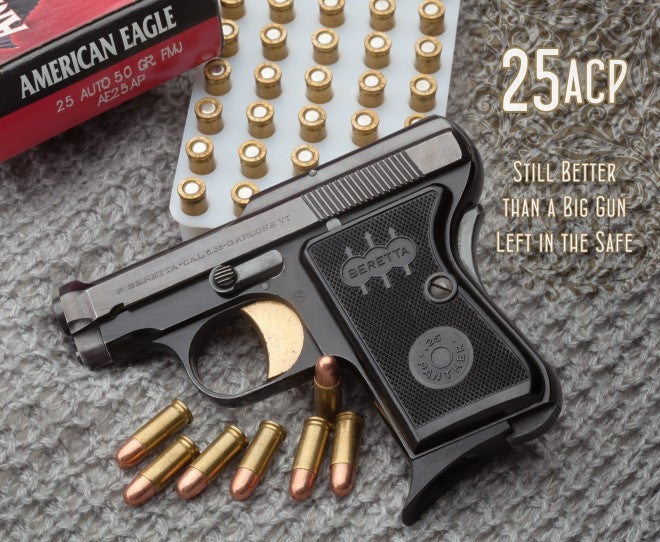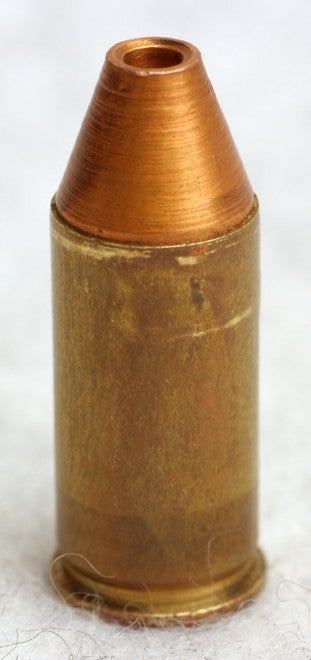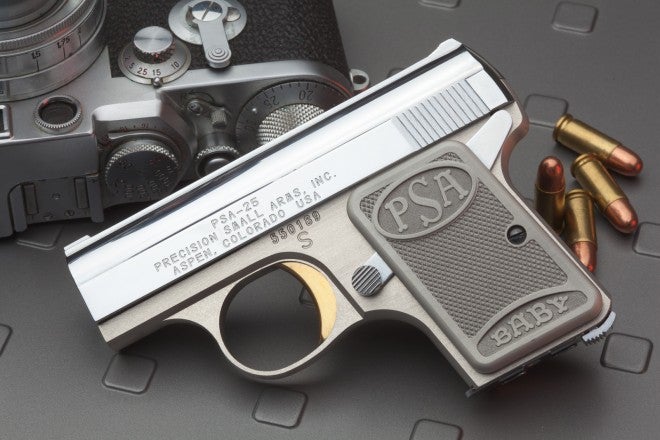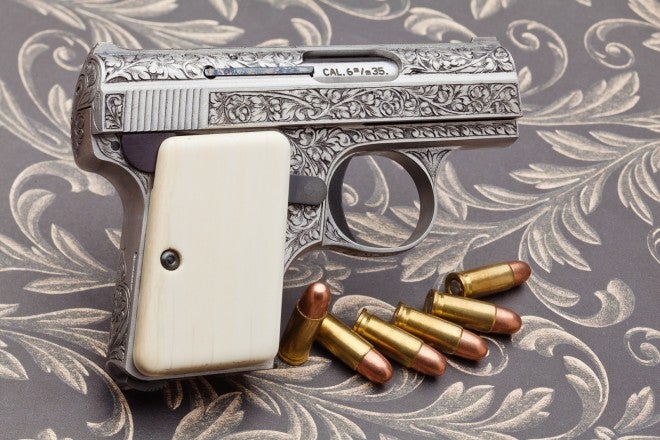A Case for 25ACP
Oleg Volk 07.13.15
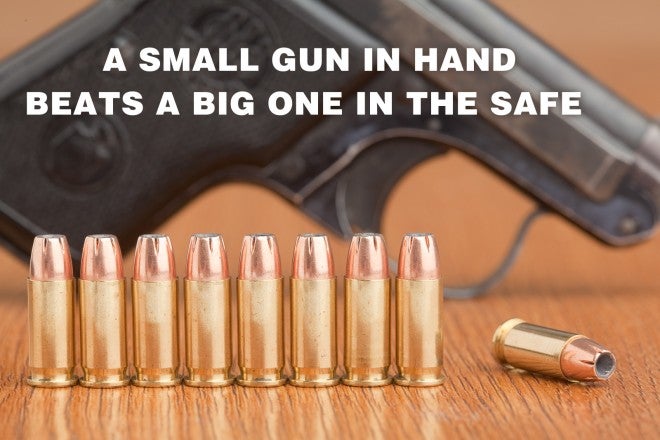
25ACP has been around for a 110 years. Some of its original competitors, like 5.5mm Velodog round, have long since become obsolete. Others, like 22LR, have become vastly more popular. 25ACP aka 6.35mm has soldiered on as a niche round, derided by most but still used by some. Considering its low power and the reputation for unimpressive terminal performance, what keeps it in production?
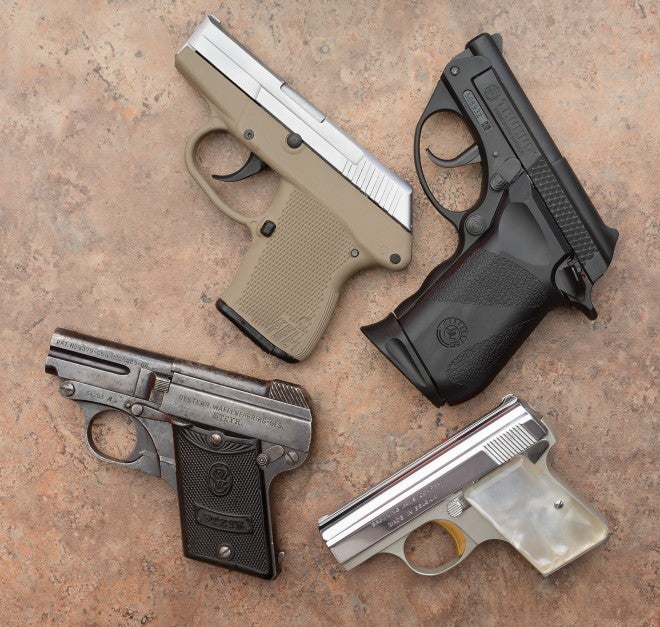
From the beginning, cartridge was designed to address the three faults of existing small-bore ammunition: poor reliability (mostly rimfire), low power (mostly black powder derived revolver ammunition), and poor penetration (again, unjacketed revolver ammunition).
Using semi-rimmed case, 25ACP fit both revolvers (like the Velodog knockoffs) and semi-auto pistols. Copper or cupro-nickel jacketing gave bullets greater rigidity and thus better penetration. While it eventually fell out of favor with revolver users, 25ACP became quite popular with users of semi-automatics. Browning designed both striker and hammer fired pocket pistols.
Besides US and Belgium, 6.35mm was also quite popular in Germany, Spain (from where many rather marginal models came), USSR (for a time, a Korovin pistol was issued to officers). Beretta in Italy produced quite a few following WW2 and through today.
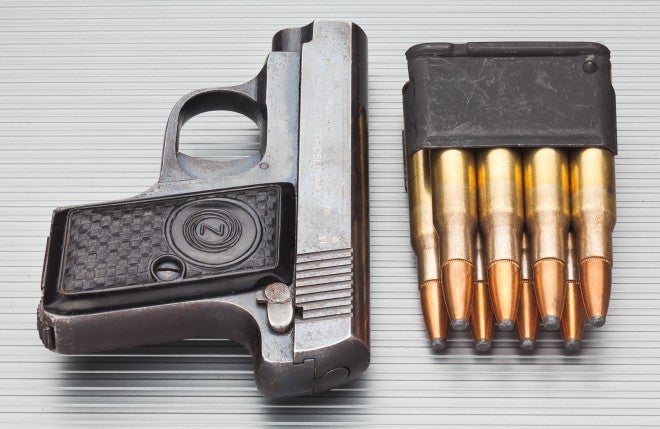
Given the tiny size and light weight of 6.35mm pistols, it’s no wonder than soldiers, officers, and spies all carried them as weapons of last resort.
Low recoil and generally decent triggers gave early 25ACP pistols effectiveness out of proportion to their power. That reputation was later reduced by the poor quality Spanish and American guns, especially when the people shot with them were larger and better padded than the Europeans of earlier days.
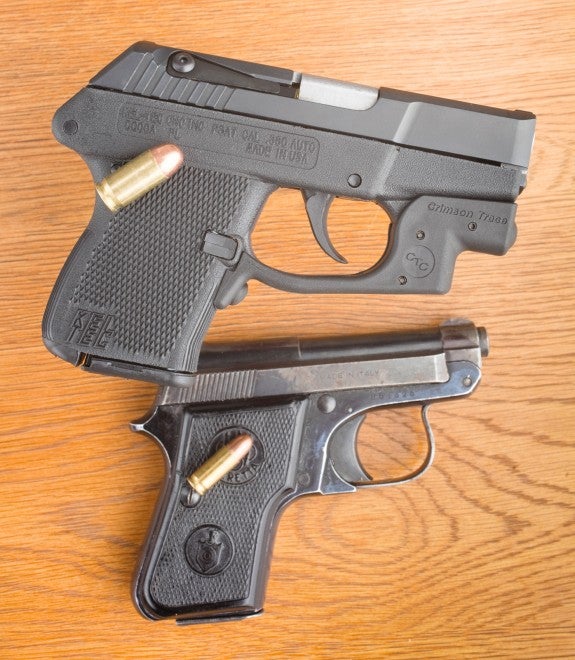
Looking at the nominal external ballistics of 25ACP next to 22LR and 22WMR, it’s a wonder the centerfire round hasn’t gone out of existence long ago. However, the comparisons of the numbers from the cartridge box flaps are misleading.
When we compare the numbers for 25ACP, 22LR, and 22WMR out of similar length barrels, what little difference exists is now in favor of 25ACP. Comparing bullets of similar weight, we get 760fps for Federal Game-Shok from a 1″ barreled NAA Mini revolver and 785fps for Federal American Eagle FMJ from Browning Baby. Combined length of chamber and barrel on both firearms is a little under three inches, as 22WMR cylinder adds quite a bit to the gun’s overall size. While velocity is very similar between the two, 25ACP has substantially less muzzle flash or blast.
Comparing to 22LR, 40 grain all-copper 25ACP load made by OATH Ammunition clocked 960fps and would greatly out-penetrate 22LR soft lead loads, achieving 800-860fps from a 2″ barrel. 22LR does enjoy a price advantage, but neither 22WMR nor 22LR match 25ACP performance until the barrel length gets to 4 inches. In the cartridge comparisons, all smallbores turn in very limited performance from stubby barrels. The only way around it would be to increase pressure and bullet dimensions significantly, at which point we are in a completely different category for weight, size, and muzzle blast–like with .357 snubbies.
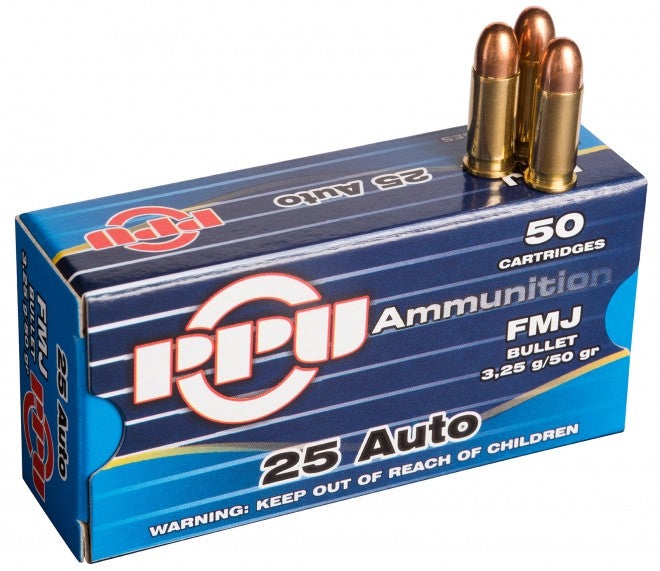
Compared to 22WMR, 25ACP costs about the same. $17.75 per 50 as of today compared to $18 per 50. Given the other costs of training, the difference is insignificant.
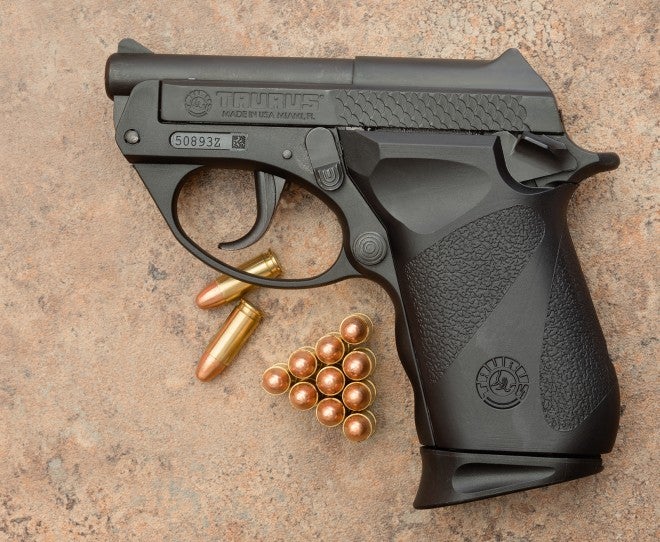
Besides better performance vs. 22LR, 25ACP also gives fractionally greater capacity. Taurus 25PLY holds 9 rounds in the magazine to the 8 held by the rimfire model. While individual bullets are obviously inferior to 32ACP, 25ACP does give noticeably greater capacity for the same grip length.
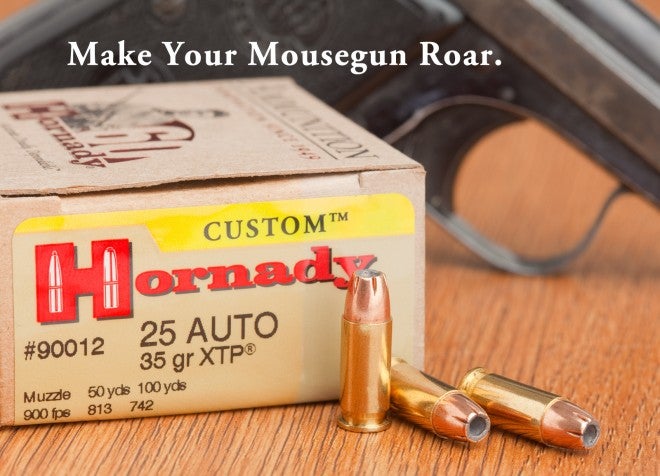
Unfortunately, non-expanding brass bullets have been banned for pistol cartridges by ATF as “armor-piercing,”so ammunition like shown above is no longer available. Neither are steel-core pointed FMJs like the Russian 5.45×18 cartridge for PSM.
Browning Baby is back in domestic production at PSA. While they make mostly presentation models, the pistol remains a viable defensive tool. Borderline too small for my hands, it fits smaller shooters quite well and performs credibly even at a distance. At seven yards, I can easily keep all seven shots on a playing card, grouping under two inches. Even at 75 yards, I can hit a silhouette target with every third shot.
To visualize 25ACP terminal performance, consider a standard #2 pencil. It’s about the same diameter and 7.5″ inches in length. Various 25ACP loads produce wound tracks from 7″ to 11″. How well would an attacker fare with half-dozen or more pencils driven through him? Obviously, larger calibers are superior, but .25 is far from useless. That said, relatively lightweight rounded bullets do bounce off skulls more often than larger, less rounded projectiles. Usually, head-shots are a bad idea with .25, both due to its ballistic limitations and because of the difficulty of precise targeting with such tiny guns.

The firearms themselves fall into two categories: Browning Baby and Beretta Jetfire are hideout weapons, scaled down beyond anything possible for even 32ACP. They exist for deep concealment and that’s their niche.
Taurus 25PLY and Beretta Bobcat are larger guns designed for ease of use. Tip barrel simplifies chambering (at the cost of making clearing a misfire more difficult–no extractor and a rather stiff slide that has to overcome the hammer spring), double action trigger allows a re-strike on a mis-fire, and the larger grips reduce felt recoil considerably. Bobcat gives the option of single action first shot for better accuracy, while 25PLY is double action only. For mainstream use, these pistols have been supplanted by locked breech 32ACP like Kel-Tec P32, but they remain viable choices for shooters with limited hand strength.
25ACP is obviously a marginal cartridge. It might not win many fights for you, but it can keep you from losing them simply by enabling carrying of a gun in circumstances where it would not be otherwise possible.
